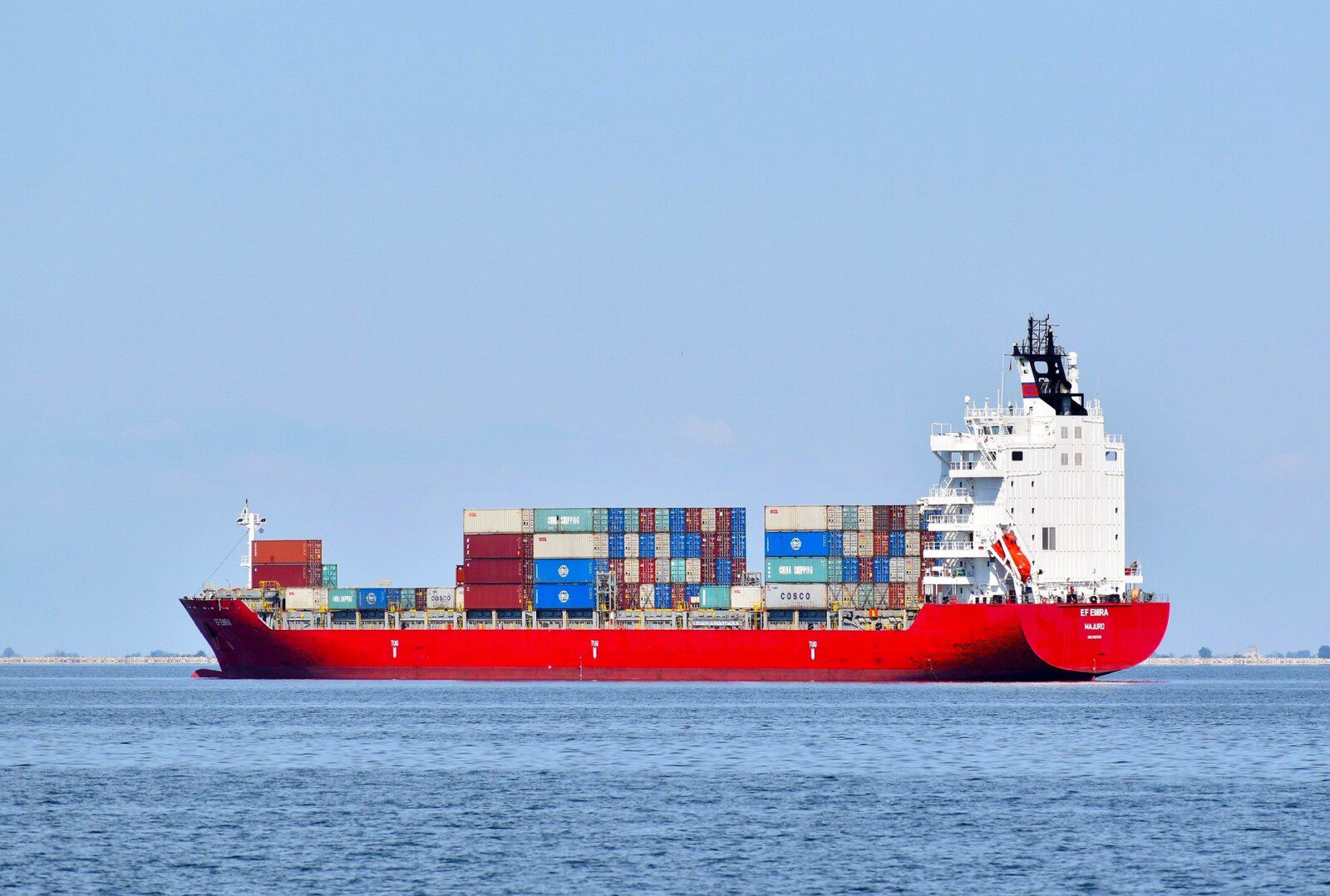Topics Explored
Maritime security has always been a central concern of global shipping, from Somali piracy to South China Sea geopolitical. But recent Houthi attacks on Red Sea merchant vessels have reignited urgency, not only in how threats are addressed, but in how existing maritime regulations are interpreted and operationalised in response. These incidents have jolted not just the industry but have also forced regulators, shipowners, and insurers to revisit their assumptions, practices, and preparedness.
So, what are the new maritime security rules, how are they evolving, and how can shipping operators stay compliant while still being profitable?
What is Maritime Security?
Maritime security is the catch-all term for protecting ships, ports, and marine infrastructure from harm such as piracy, terrorism, smuggling, and geopolitical disruption. It’s also about protecting global commerce. Up to 90% of all goods are shipped by sea, so when a container ship is hijacked or a critical shipping lane is blocked, the effect is worldwide.
Maritime security can vary from onboard monitoring and armed guards to the larger context of international cooperation and intelligence exchange. The term has grown considerably in the last two decades, particularly since 9/11. What was initially a largely anti-piracy and anti-terrorism effort has grown to include cyber threats, climate-related threats, and the spillover from regional conflicts such as those in the Red Sea.
For a comprehensive examination of maritime operations and solutions to risk, visit our Maritime Security Services page.
Recent Updates in Maritime Security Regulations
Because the maritime community is complex, legislation is critical in creating coherence, avoiding renegade players, and harmonising cross-border conduct. Such legislation is typically implemented by flag states, coastal states, international bodies like the IMO (International Maritime Organisation), and regional blocs.
Current regulatory measures have aimed at countering both conventional and new threats:
1. ISPS Code
Implemented in 2004 as part of the SOLAS convention, the International Ship and Port Facility Security (ISPS) Code continues to be a keystone of maritime security. It requires security measures for detecting and deterring threats at sea and in port.
2. SOLAS Chapter XI-2 and 2022 Amendments
The Safety of Life at Sea (SOLAS) Convention has been amended a number of times, lastly in 2022. Such amendments further raised ship design requirements, emergency preparedness, and cyber risk considerations.
3. IMO Cyber Risk Management Guidance
Since 2021, shipowners have been expected to integrate cyber risk management into safety systems. Enforcement of this guidance is increasing among classification societies.
4. EU Coordinated Maritime Presence (CMP) Concept
Launched in 2020, CMP aims to enhance the EU’s operational presence and maritime awareness in areas like the Gulf of Guinea. It is a sign of rising multinational coordination activity.
5. BMP5 (Best Management Practices)
Originally drawn up to counteract Somali piracy, BMP5 remains in force, particularly for high-risk voyages like the Red Sea. It mandates practical security measures such as hardening of ships and watchkeeping protocols.

Implications for Shipping Companies
Security regulations aren’t just paperwork, they translate into tangible impacts on operations, logistics, and bottom lines.
- It means that shipping companies need to be devoted to much higher levels of operational strictness.
Ships sailing high-risk routes such as the Red Sea now have more onboard security installations, such as CCTV cameras, secure citadels, intruder alarm detection, and even armed guards in some cases.
- Routing strategies have also dramatically changed.
Ships are being diverted from normal routes like the Bab el-Mandeb Strait to longer but safer routes, which increases fuel consumption and delay, but ultimately saves cargo and crew safety.
- Training has also become more of an urgent issue.
It is no longer just a question of reacting to a pirate boarding. Modern crews must be trained in cybersecurity drills, psychological resilience to crisis, and emergency communication protocols. The psychological cost of operating in high-risk regions means crisis preparedness must address human as well as operational concerns.
- Regulatory compliance is also under tighter scrutiny by insurers and port authorities.
Shipping lines are experiencing more in-depth inspections, and premiums are currently varying according to perceived exposure and mitigation. For instance, inability to demonstrate SSAS functionality or crew training might result in denial of access to some ports or paying significantly higher insurance surcharges.
Implications for the Maritime Industry
Industry-wide, the knock-on is higher operational costs, with more being spent on advanced risk management and supply chain logistics being disrupted with higher shipping delays and rerouting. Container volumes through the Suez Canal are down, and the need for reliable, up-to-date intelligence is no longer a luxury in voyage planning.
Intelligence platforms and real-time feeds are becoming standard fare for shipping operations. Shipping firms are expected to collaborate more transparently with naval forces, port authorities, and maritime risk consultancies.
This also means that there is a greater need and demand for real-time intelligence and risk monitoring. Put simply, security underpins resilience. And in an age where reputational loss can circulate faster than a hijacked vessel, resilience is the actual money of maritime leadership.

Benefits of Enhanced Maritime Security Measures
While initial costs for maritime security are high, long-term benefits typically justify the investment.
Reputation and trust: Companies that prioritise safety send the message of dependability, establishing strong relationships with customers and business partners and gaining a more positive public image.
Operational resilience: Well-protected ships have less disruption, leading to more reliable shipping schedules and fewer insurance claims. Rapid response to an incident is also more likely.
Competitive advantage: In high-risk trade, reliable carriers ride out the adversity. A company’s reputation as secure and predictable attracts business and keeps operations on track during dangerous times.
Enhanced decision making: Situational awareness and real-time intelligence allow shipping organisations to make superior decisions about routing, handling cargoes, and protecting crews.
Houthi Attacks in the Red Sea
Although the Houthi attacks haven’t resulted in new maritime laws, they’ve significantly impacted the industry’s regulatory landscape. Authorities and insurers have adjusted threat assessments, operational expectations, and compliance protocols in response.
Among the most notable recent maritime security events is the string of heightened Houthi attacks on Red Sea merchant ships, particularly since the latter part of 2023. These Iran-backed militant assaults include missile and drone attacks that have led to some shipping firms halting operations altogether within the area.
Over 40 attacks by Houthi forces in the Red Sea have taken place since November 2023, according to the US Navy. The financial toll has been staggering. Lloyd’s List reported a near 30% decline in Suez Canal traffic, with vessels being diverted around the Cape of Good Hope, taking weeks off the journey, and fuel prices soaring.
This sudden escalation has prompted worldwide maritime authorities to redraw threat zones and redistribute BMP5 protocols with regional advisories. Insurers have also responded with hard clauses and increased premiums, putting additional pressure on shipping firms to demonstrate robust security compliance.
How to Stay Compliant with Security Regulations
Here at Securewest International, we work together with clients to drill through the confusion of maritime security regulations while furthering their live threat mitigation.
Our Intelligence Risk and Threat Assessments form a close examination of geopolitical risk, piracy threat, and localised conflict dynamics, enabling shipping companies to make informed choices before reaching high-risk areas.
At the same time, our SSAS (Ship Security Alert System) solutions provide rapid detection of alerts and escalation of security threats. We monitor alerts 24/7 and deliver incident-specific support, allowing effective response by the crews without compromising ISPS compliance standards.
Remaining compliant isn’t merely a matter of sidestepping penalties; it’s about safeguarding lives, protecting assets, and maintaining uninterrupted international trade. And with security threats constantly evolving, there is little leeway for complacency.
Looking Ahead
Maritime regulation is tightening out of necessity, not bureaucracy. For shipping companies, compliance is critical to maintaining operational continuity, managing risk, and protecting reputation.
At Securewest, we help you stay ahead of evolving threats and regulations through expert guidance, real-time intelligence, and integrated security solutions.
Get in touch to learn how we can support your maritime operations.
